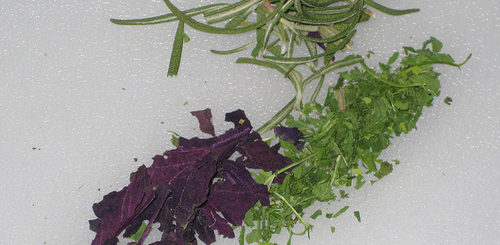Ask Chef: Salt
Q: Chef. Just how many different types of salt are out there, and which one is best for cooking?
A: Salt basically comes from two sources, land deposits and the ocean. It is harvested by evaporating moisture from brine or seawater, and leaving behind sodium and chloride ions. Those ions form lovely crystals of salt. In general, there are three types of salt: table, kosher and sea. Each of these types of salt has its own unique benefits, so their individual characteristics may make one type better suited for certain cooking methods than others. However, it’s not as complicated as it might initially seem.
Table salt: This is what you find in most salt shakers. Uniform crystals and pure white. This is because most of the natural minerals are processed out during harvest. Iodized salt is a table salt with iodine added. This practice originated in the mid-1920s in an attempt to curb a U.S.-based epidemic of hyperthyroidism, a hormonal condition that is linked to low iodine levels. While the epidemic itself is no longer, iodized salt is still widely available. Table salt is very fine and small grained, making it easy to measure and dissolve. These characteristics make it a fine choice for baking.
Kosher salt: Unlike the name suggests, kosher salt is not literally kosher. Its name is derived from its utility, as it was originally developed for the preparation of kosher meats in accordance with Jewish law. Unlike table salt, it is coarser. This is because each grain of kosher salt is a collection of multiple salt crystals. This structure makes it better suited for pickling, because the large crystals enable it to draw out more moisture from meats and other food as compared to smaller grained salts. Additionally, kosher salt is less dense and lighter than table salt, which is why it so easily clings to the lip of a margarita glass. Finally, the larger grains are also more tactile, and thus easier for chefs to “pinch.”
Sea salt: Sea salt is harvested by evaporating seawater. Because it is minimally processed, sea salt retains minerals that were present in the water it was harvested from. These minerals impart a variety of colors and flavors to sea salt. For example, salts that have a pink hue likely contain calcium, magnesium, potassium, copper, iron or even carotene from salt-tolerant algae. On the other hand, black salts might get their coloring from sulfurous compounds, iron, charcoal or even lava. In recent years, sea salt has gained quite a bit of attention in the kitchen. It does tend to dissolve quickly, so chefs commonly add it after the actual cooking process. This not only lends visual appeal, but also creates a nice contrast of textures. Consider the light crunch of a sea salt sprinkled atop a smooth slice of sashimi, for example. During your quest for salty new adventures, you might also come across smoked sea salts. These are wonderful when used on grilled or roasted foods.
Have a question for Chef? Shoot an email to chef@urbanvivant.com! We’d love to hear from you.



Recent Comments